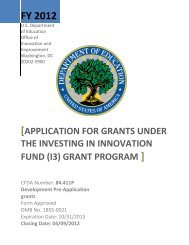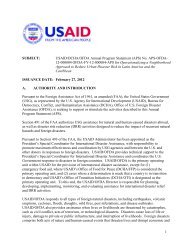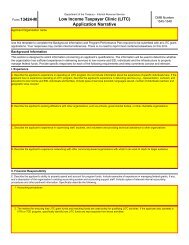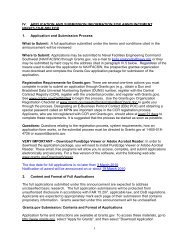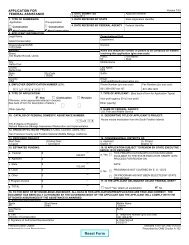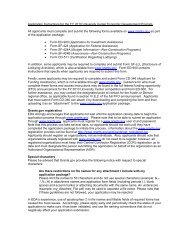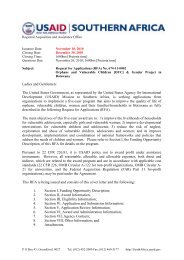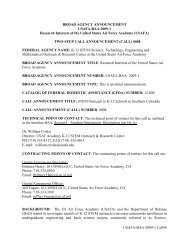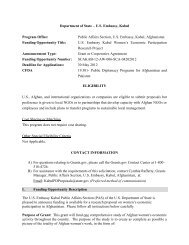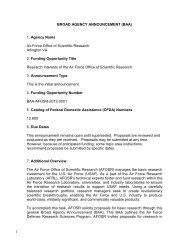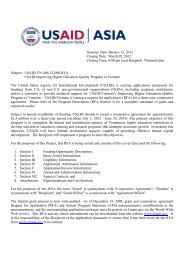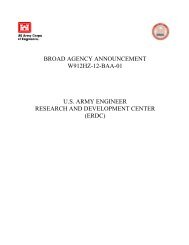USAID/DCHA/OFDA Annual Program Statement - Grants.gov
USAID/DCHA/OFDA Annual Program Statement - Grants.gov
USAID/DCHA/OFDA Annual Program Statement - Grants.gov
You also want an ePaper? Increase the reach of your titles
YUMPU automatically turns print PDFs into web optimized ePapers that Google loves.
process to strengthen the response system, the IASC identified five key areas with an emphasison action: leadership, coordination, accountability, building global capacity for preparedness,and advocacy and communications. NGOs are contributing to the process at the IASC, and inparticular are involved in collaborating to help determine minimum commitments andresponsibilities of organizations involved in a cluster, as well as defining NGO participation inhumanitarian country teams (HCTs). In addition, donors are increasingly aggressive in efforts tocoordinate both at the field and headquarters levels on funding and advocacy within thetraditional international humanitarian community and within various new communities such asthe private sector, media, development efforts, and affected populations.Because every disaster brings a unique combination of international, regional, and local players,and each country’s resources to address a disaster are distinct, instruction and training about howto improve the performance of the humanitarian assistance architecture continue to be one of themost prevalent needs identified in studies about international humanitarian response to disasters.High staff turnover is a frequent problem among INGOs and other international organizationsparticularly when conditions require a disaster response lasting more than several weeks; thus,the more NGO staff who understand the goals of international humanitarian assistancearchitecture and technical application of best practices, the more conducive the environment willbe to achieving an effective response. Furthermore, national staff of INGOs may have limitedexposure to the larger workings of the humanitarian assistance architecture, and have difficultyengaging with international staff from UN agencies and other multilateral organizations.International staff who respond to humanitarian emergencies frequently deploy from outside theaffected country with little prior knowledge of conditions on the ground. A broaderunderstanding among humanitarian actors of the international humanitarian architecture androles and responsibilities can help strengthen relationships in-country where such relationshipsoften form the basis for collaboration and inclusiveness during a disaster.The number of disasters rose during the past decade and will likely continue to rise. The UN,NGOs, and new actors in humanitarian disaster response have demonstrated that pre-disasterinstruction and training for those charged with the planning and delivery of humanitarianassistance has worked to improve the performance of the humanitarian assistance architecture. Aglobal view and comprehensive efforts are needed not only to evaluate performance but toactively engage more humanitarian actors in strengthening partnerships, operationalizingaccountability, and better advocating on critical issues such as humanitarian principles,preparedness, and early recovery.In 2010, a second evaluation of the Cluster System was carried out. In its findings, a number ofrecommendations were made pertaining to NGO’s involvement in humanitarian coordinationmechanisms. In particular, a) reinforcement of the role of international NGOs in clusters, b)facilitating the participation of national and local NGOs and strengthening their capacities c)further strengthen learning, and finally d) strengthening training on facilitation, coordination andcross-cutting issues on the national and subnational levelsThe USG is a leader among donors in engaging in improving the performance of thehumanitarian assistance architecture through financial, technical, and policy support. Through4



